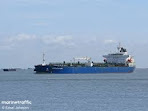Iran shares land or water borders
with 15 countries namely UAE, Afghanistan, Armenia, Azerbaijan, Bahrain, Iraq,
Kuwait, Kazakhstan, Oman, Pakistan, Qatar, Russia, Turkey, Turkmenistan, and
Saudi Arabia.
In a meeting with an Iranian trade delegation in Kabul in
mid-August, Afghanistan's interim Deputy Prime Minister Mullah Abdul Ghani
Baradar Akhund said that his country is eager to attract Iranian investors in
order to develop Afghan mining industry, generate solar electricity and expand
railway connectivity.
The Iranian delegation also proposed to launch a joint
special industrial zone with Afghanistan.
Noting that Afghanistan has turned into a good place for
making investment, Mullah said that the relevant ministries and organizations
there, will cooperate and work closely with the investors.
The Iranian delegation, made up of economic and trade
players, also held a separate meeting with Afghanistan’s acting minister of
commerce Haji Nooruddin Azizi. They called for the formation of a joint
economic-mining zone between the two neighboring countries.
In early August, Iran's commercial attaché in Afghanistan
said that in order to improve Iran’s presence in Afghanistan's markets, the
trade between the two countries should move towards newer models of
cooperation.
“Afghanistan
meets more than 80 percent of its market needs through imports, and imports
from Iran constitute 25 percent of this amount,” Hossein Roustaei said in a
meeting on opportunities and challenges of the Afghan market, held by Iran
Chamber of Commerce, Industries, Mines and Agriculture (ICCIMA).
Referring to Afghanistan's import priorities, including
food, agriculture, fuel, basic goods such as flour, oil, eggs, day-old
chickens, medicine, medical equipment, and construction equipment, he said,
“Iran exported more than 724 million dollars of goods to Afghanistan in the first
four months of the current Iranian calendar year which posted increased by 28
percent as compared to the same period last year.”
“The establishment of national security and the central
government in Afghanistan over the past two years have improved the conditions
of trade with this country,” he added.
Afghanistan has prioritized the exploitation of the
country’s mines. Therefore, Iran's traditional economic relation with
Afghanistan should enter into newer models of cooperation, he stressed.
According to Roustaei, investment and operation of mines,
technical and engineering services, mechanization of agriculture and smart
agriculture, construction of transportation infrastructure, and renewable
energies are among the new fields that should be considered for cooperation
between the two countries.
Increasing non-oil exports to the neighboring countries is
one of the major plans the Iranian government has been pursuing in recent
years.






